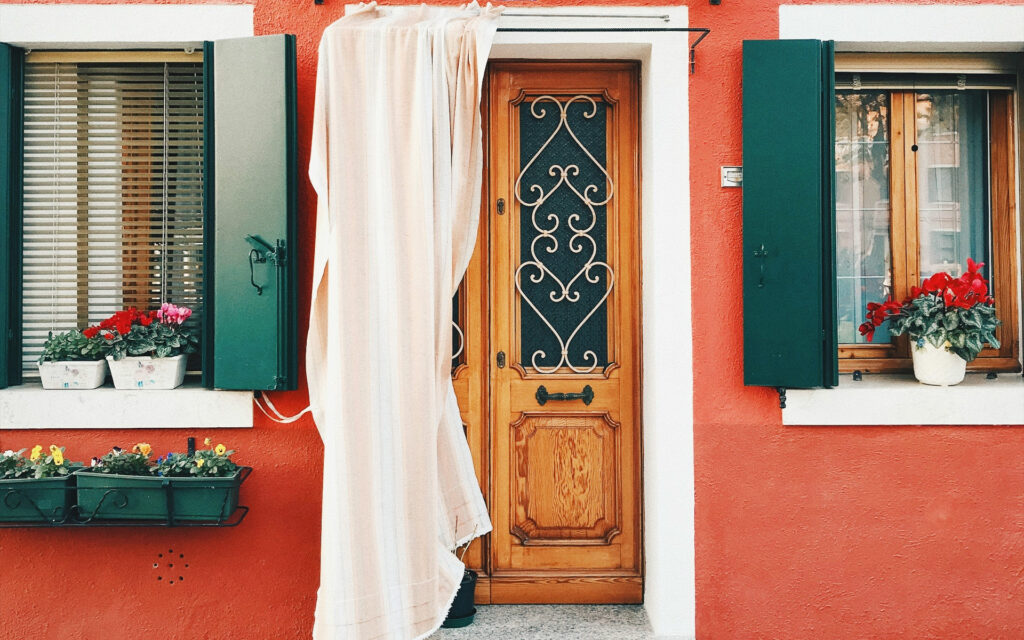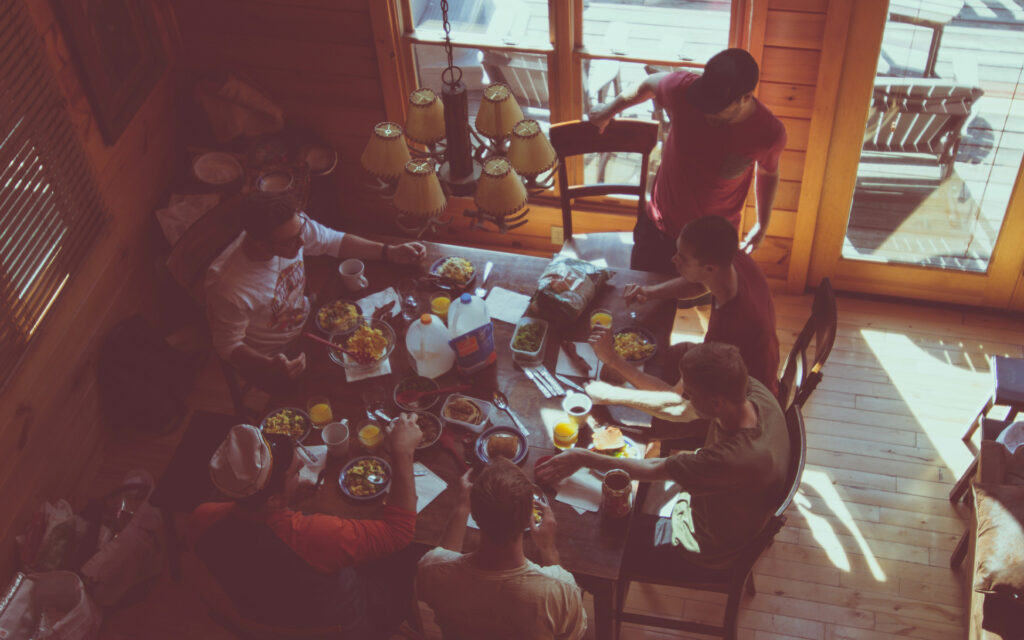Innovation and creativity are the necessary resources for those who want to try to improve their habitat. In particular, the most important resource to have is the tenacity of not giving up. We want to improve homes but also gardens. Individual blocks but also entire neighborhoods. Improve to reinvent living spaces that are increasingly suitable and sustainable. And keep calling home where you live. “Improving” is a trend of this 2024 with the use of sustainable materials, the choice of palettes, bold colors and the adoption of cost-effective solutions. Improving your homes with simplicity and wisdom means building with what remains and continuing in the process of circularity of materials. These are some aspects that we would like to elaborate on in this article.

Resources to get out of extractivism
In his latest book, Philippe Simay, a philosopher and specialist in environmental ethics, questions the relationship that our societies have with their resources. To rediscover the bonds that unite us to materials and, in general, to the real world. Simay proposes to move away from an anthropocentric approach to resources. He defines it, with an extremely specific term, extractivism. Highlighting the need, for our time, not to take from the Earth, but to learn to build only with what remains. That is, to reuse what exists. This would be a truly sustainable approach to architecture.
Building with what’s left
Renovating your home wisely isn’t just a slogan. We are prisoners of a productivist model, which is based on the massive extraction of non-renewable raw materials from the planet. The architecture, which massively uses these raw materials, does not make the world more habitable. Quite the opposite. It participates in the predation and destruction of inhabited environments. This systemic violence cannot be ignored and cannot be tolerated. All those who are part of the world of architecture must be aware of optimizing the available natural resources or of privileging materials derived from biomass. Those who design have ethical obligations towards the environments in which they operate. But how can it still be built, without damaging the habitat and the planet?
Looking at tradition
Based on his observations and research, Philippe Simay proposes to return to an environmentally friendly approach. These words may sound like pure utopia. Given the ever-increasing consumption of resources, which in the last twenty years has greatly increased, turning off energy cannibalism, returning to more frugal (even ancient) tools that do not need all this energy, the results could be similar, if not better. And the environmental impact would certainly decrease. Philippe Simay provokes us, inviting us not to take anything from the Earth anymore. How will we give up our “comforts”? How will the “mechanism” put in place in recent decades stand up?
Starting from the small
The author travelled the world for four years. On his world tour he has met people who inhabit our planet in a different way and whose lifestyle can teach us a lot. A new way to inhabit the world. While their concerns about the future resonate in the consciousness of “developed” civilizations. According to Simay, houses tell our way of life, our way of conceiving the habitat but also the relationship with others. With individuals, with the city. And above all it reflects the idea we have of nature in an era when the trend is towards the standardization of lifestyles and construction methods. “As the diversity of living beings has an intrinsic value, the diversity of habitats and ways of life has a cultural value,” says the author.
As the diversity of living beings has an intrinsic value, the diversity of habitats and ways of life has a cultural value”
Listening is more important than answering
Taking an interest in places is a starting point. Because we are the places. Wherever you are, there is your place. The nest, the house, the family you belong to and care for. What surprised Philippe Simay most during his travels was the ease with which people opened the doors of their homes to him. “Everyone lives” starting from the house. Economic, political and religious issues quickly arise from them. If the habitat is the main place of intimacy, it is often also focused on the outside. In other words, rather than the question of interiority, it is good to focus on how it projects itself on the outside. “The house is not an empire within an empire”, but an entity connected to many other things that creates circularity.
A very different philosophy from the “Western” way of conceiving the domestic environment that instead involves a retreat, which is also an impoverishment of architecture reduced to a simple object: “Living is not simply occupying a space, it is learning to share it”.
Living is not simply occupying a space, it is learning to share it

Reconnecting
The issue of sharing space is essential. Especially in the face of the destruction of ecosystems and the ecological crisis. At the same time, solidarity networks are stronger in places where housing conditions are more precarious.
Today it is urgent to live differently in the West. Rethink how we produce buildings, which are resource-intensive. It is urgent to reintroduce a social dimension in the development of the built environment. Recall that globally, 20% of the population continues to hoard more than 80% of the available resources. And more metals are about to be extracted from the earth’s crust in one generation than has been done in all of human history. While a report on biodiversity raises the alarm about the state of our environment: we must “reconnect”. With others and with our habitat. Circularity is essential.
Can we do something to stop digging the grave and reject a model based on a permanent global crisis ? According to Philippe Simay, yes; let’s hope he’s right.
To learn more: Bâtir avec ce qui reste di Philippe Simay
May be also interested in : Will the kitchen of the future be marked by a green approach?





